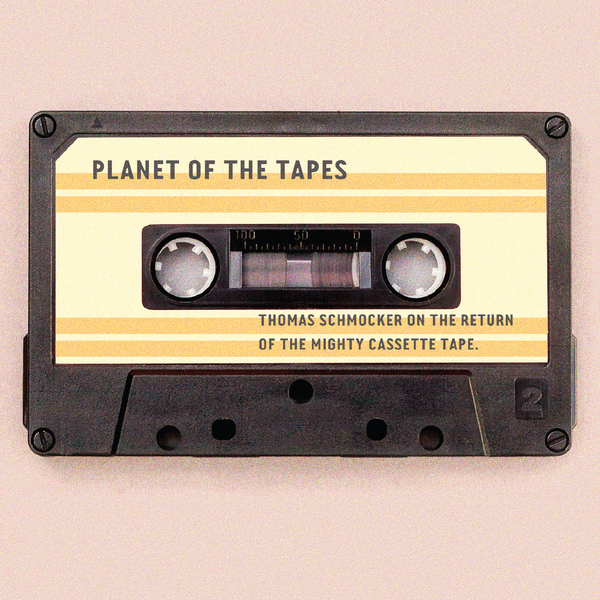Planet of the Tapes

You may have seen them on a merch table, or you might remember them from your old car. Kids used and abused them, even illegally traded them. Like a once retired wrestler, the humble cassette has returned to the ring and with their re-entry into the mainstream (Taylor Swift, I see you), comes time to spotlight the weird, mysterious and outrageous creations of tape trading and their new home on the world wide web.
Before cassettes became widely available in the 1980s, making music in your home was a vexed proposition – reel to reel tape players were expensive, large and technically complicated; while pressing, marketing and distributing vinyl was out of reach of the general public. The cassette offered something comparatively simple: grab a cheap tape deck, plug in a mic, hit record and away you go. The ease of recording to cassette meant that almost anyone could record music at home. Distribution, too, became simple as pie. With a dual tape deck you could dub your recorded tapes onto blanks, advertise in a paper or magazine and suddenly you’re distributing your music by mail across the world. Cassettes offered such simplicity and ease of access that complex global webs of sending, receiving and contributing music formed into a culture we now know as “tape trading”.
Projects exploded and tiny cassette labels flourished as tape trading whizzed along, as almost anyone could release a small run of tapes. The music itself runs the gamut of genres, but specific to home taping is an unbridled weirdness, intimacy and anti-commercialism. The best of it sounds wide-eyed with shock at the possibility within a bedroom: What if I do this? Or THIS?
Most special to these recordings is the feeling of meeting a yearned-for-freedom. The smallest and strangest of creative sparks could now generate a neat and complete tape in a plastic case. Your average weirdo being able to release anything they wanted opened the door for (if you’ll excuse me) some really strange shit to be cut to cassette. This strange shit was then forgotten in attics and garages - until now.
Take the album Men Without Clothes by Software on YouTube. Its combination of burned-out drum machines, detuned synths and drunk pop sensibility is staggering. An album and project titled Descriptiv Musik starts dreamily slow, travelling on a sax shaped cloud before the second half turns tensely backwards and raga-like. Regicide Bureau, a tape label and a project moniker, is all hiss, feedback and guitar loops in longform variations. These and so, so many more unique tapes that were made then forgotten are now being digitised and distributed freely online through blogs like Archaic Inventions, Tape Attack, No Longer Forgotten Music and on disparate Youtube channels. There are hundreds of posts and dozens of blogs regularly uploading found tapes. A literal treasure trove of unexpected and unique music is making its way online week by week, so consider this article as your heads-up.
In writing about these bizarre and surprising resurfaced tapes, I’ve come to realise that they offer something our industry sorely lacks: mystery. Each tape has a history and context lost to time. Information about them is scant or absent. These forgotten tapes are a chance to peer into the peculiar small worlds of their makers, worlds that no longer exist. In our dense, brand-obsessed day this music is its converse - almost anonymous and entirely non-commercial. True discovery breeds excitement, like the brushing of dirt off an artefact that looks like nothing you or anyone has seen before. That electricity, I think, is why I keep coming back for more.
Thomas Schmocker is a Triple R graveyarder and fill-in presenter. You can listen to a mix of Thomas' home tape discoveries below.